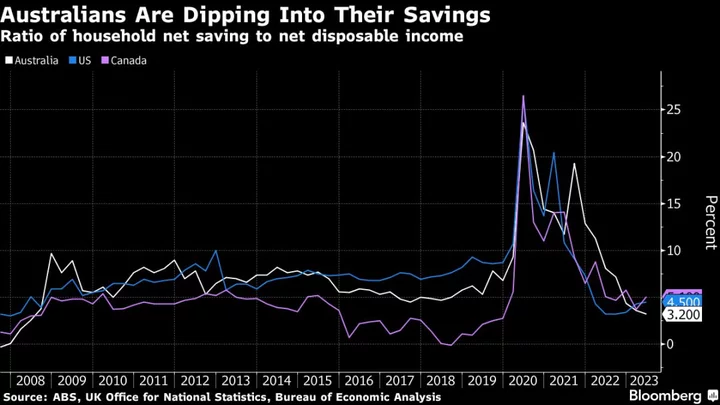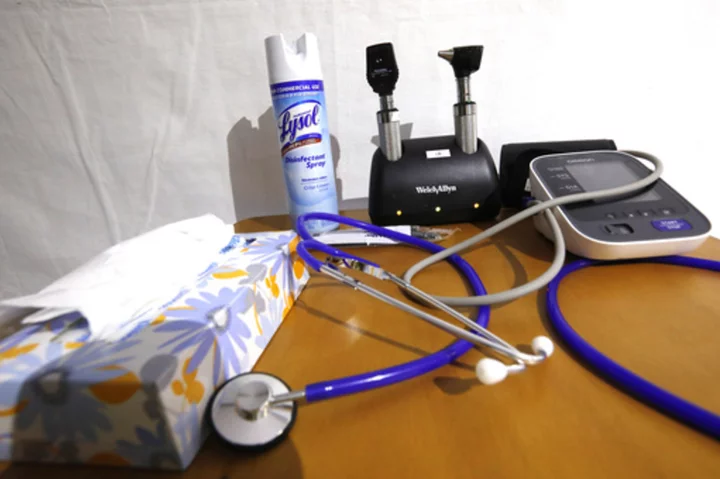A man strolls out of a New Zealand supermarket carrying bags stuffed with nine stolen legs of lamb. Another pushes out a shopping cart stacked with NZ$1,500 ($896) of pilfered corned beef and mayonnaise. Yet another smashes a security guard in the face with a bottle of milk before making off with a basket of goods.
None attempt to disguise their theft.
The men, featured in security footage released last month by Foodstuffs North Island, which is part of the nation’s largest grocery chain, are emblematic of the escalating retail crime wave sweeping through the country and neighboring Australia. The theft is brazen, organized, increasingly violent and is costing the two nations an estimated A$10 billion ($6.4 billion) a year combined, according to retail groups.
Read More: Shoplifting Frenzy Sees UK Stores Resort to Desperate Measures
Experts say the incidents underscore the hardship many people are facing as costs rise for everyday items. With consumers squeezed, organized criminals are finding a ready market of buyers for stolen food and other household items, said Phil Thomson, chief executive officer and co-founder of retail-crime intelligence platform Auror, which operates in New Zealand, Australia, North America and the UK.
“The majority of the theft that occurs is from people who do this as their full-time job,” he said. “About 10% of people are causing about 60% of the crime. And it’s all profit motivated. They’re stealing to order and they’re stealing it to on-sell.”
New Zealand and Australia aren’t alone in dealing with a rise in retail crime — in the US, “flash robs” involving gangs of thieves have targeted luxury malls in California, while in the UK, organized criminal gangs are stealing high-value items, lifting theft there to a record high.
The data for the Southern Hemisphere neighbors, though, are stark. Shoplifting and retail theft in New Zealand increased 45% in 2022 compared with 2021, according to figures released by police this month, which includes theft reported directly to them and through Auror. Theft from retail stores was up 47.5% year-on-year in June in New South Wales, Australia’s most-populous state, according to government data released earlier this month.
With the costs of stolen goods mounting, many antipodean businesses are overhauling their security, particularly in areas like self-service checkouts that make it easier to smuggle unpaid items out of stores. Technology solutions are proving popular, like rooftop sensors, automatic gates at self checkouts and even trials of facial recognition software.
Other measures include bollards to stop ram raids. And while the changes aren’t as dramatic as the armed guards stationed at stores in the US or dummy products in the UK, they’re a substantial shift for retailers in countries where laptops can often be left unattended on cafe tables without fear of theft.
Read More: Shoplifting Frenzy Sees UK Stores Resort to Desperate Measures
“This is not stuff that we should be doing in a cost of living crisis,” said Chris Quin, chief executive officer of Foodstuffs North Island, which saw crime at the chain’s 320 stores rise 59% in the three months through July compared the same period last year. “We should be putting it all into, ‘how do we get food prices lower.’”
Fog Cannons
The shoplifting surge also reflects the growing sense of desperation for many people.
Roughly 30% of Australians are finding it difficult to get by on their income, according to an August survey by the Australian National University, which also found people were spending less on groceries and essentials and delaying major purchases.
Over the last 10 to 12 months, there’s been a shift away from stealing electronics toward perishables like meat, according to Michael Townsley, a professor at the Griffith Criminology Institute at Griffith University and retail crime consultant at National Retail Australia.
Read More: Australian Homelessness Spikes as Soaring Living Costs Hit Poor
Some of the region’s major brands have revealed the cost of the crime wave. Jeweler Michael Hill International Ltd. said earnings were hurt by its NZ$5 million outlay on security, including guards, fog cannons and armored glass. In Australia, major grocer Coles Group Ltd. said its total stock loss rose 20%, and it’s deploying more security personnel and trialling body cameras for staff.
Organized Crime
Losses are especially acute for goods with slim margins. For every one drill that’s stolen, about 10 need to be sold to make back the money, according to Scott Nelson, director of two Mitre 10 hardware stores in New Zealand’s Hawkes Bay.
New Zealand’s retail crime wave, particularly ram raids, is now a top issue ahead of next month’s general election, and has contributed to the governing Labour Party’s weak opinion poll results. The main opposition National Party partly blames “soft” penalties for shoplifting and has promised military-style boot camps to stop what it calls a “tsunami of retail offending.”
Currently, most first-time shoplifters get a warning but persistent offenders can get up to seven years in jail. Retail body the Australian Retailers Association earlier this year renewed calls for state and territory governments to enact harsher penalties for people who assault retail workers.
Read More: Bad Customers Are Forcing Retail Workers to Quit
While many retailers are grappling with the financial fallout of rising crime, the impact on staff may emerge as a longer-term problem for retailers.
“Many are effectively saying they aren’t confident that they can provide a safe environment,” said Carolyn Young, head of trade organization Retail NZ.
Almost every conversation she’s had in her two-month tenure has been about theft. And retailers across both countries say the current wave marks a historic shift in the business environment.
“Ten years ago, people who were stealing were hiding products in their jackets or down their pants,” said Auror’s Thomson, estimating organized criminals can target up to 10 stores a day. “These days they’re filling up a trolley and pushing it back out the front door and they don’t care who sees them.”
--With assistance from Angus Whitley.









